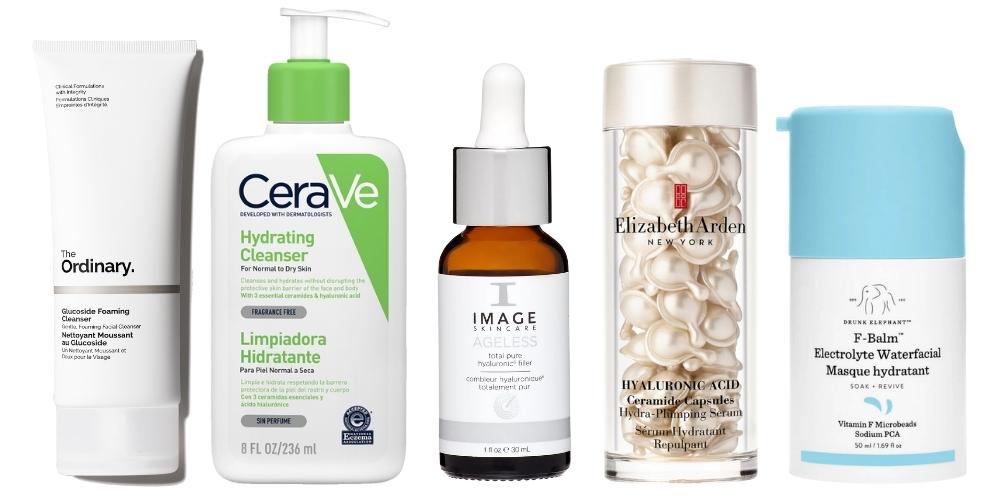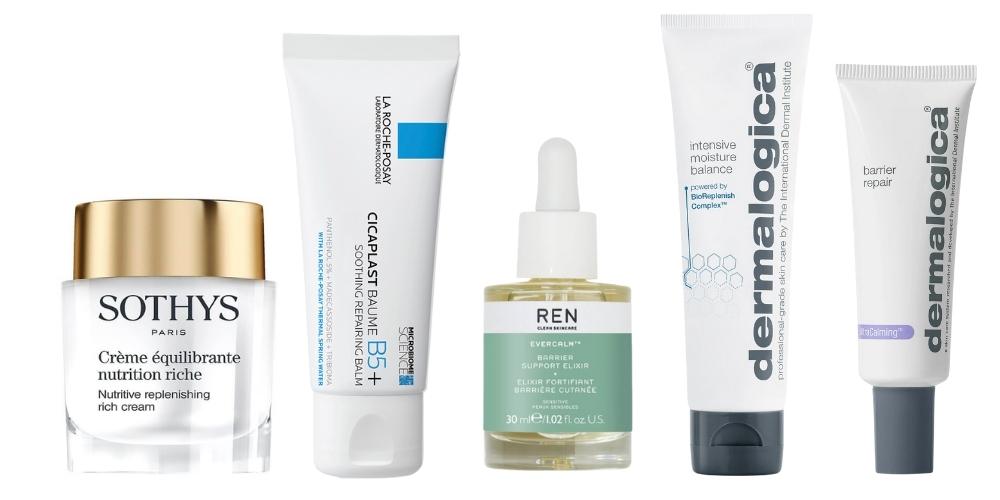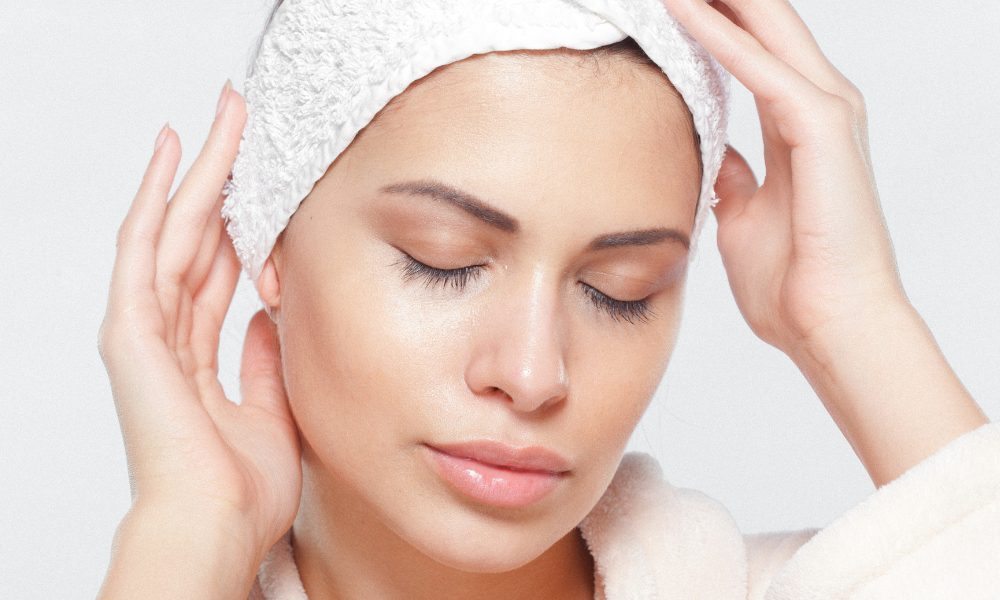Many people go a lifetime without understanding the structural composition of skin. Sure, when you first graze your knee you’ll come to realise there are a few layers you can stand to lose; likewise if you peel after a bad sunburn.
But it’s not often we consider what’s happening during these occurrences, and how hard our skin works to protect us.
If we commit to a regular skincare routine, we generally consider the aesthetic results. Yet if skincare doesn’t work well, it’s tricky to diagnose the variety of reasons why.
What is the skin barrier?
Skin is the body’s largest organ and made of three layers: the epidermis, dermis and hypodermis. The outermost layer, the epidermis, is the one you can see. Although paper-thin, it too has a number of layers of cells. The cells grow outward then flake off, with a protective barrier on top known as the stratum corneum (Latin for ‘horny layer’). It’s this barrier you’ll see referred to in the plethora of new skincare products touted to ‘respect’ your barrier, or for ‘barrier repair.’
Like a seal, the primary job of that tightly organised barrier of skin cells, topped with a layer of oil and water called the hydrolipidic film, is to keep damaging elements like bacteria and irritants out, and balanced hydration in. Though technically made of dead skin cells, keeping the barrier working efficiently is an unsung hero for maintaining healthy, uncompromised and radiant skin, particularly in the cooler months.
“Having dry and/or dehydrated skin feels uncomfortable and no amount of makeup can disguise the dullness and flakiness completely,’’ explains Emma Hobson, Dermalogica’s Director of Education for Asia Pacific. “Healthy skin comes down to having a healthy barrier.”
Hobson likens its structure to a brick wall. “The dead skin acts as bricks and lipids [skin’s natural fats] glue the dead skin cells together like mortar.
“These components build a protective, resilient barrier that holds moisture within the skin and keeps irritants out.”
How to tell if your skin barrier is damaged
A damaged skin barrier often involves some degree of dry, flaky, or scaly skin. A consequence of surface lipids being depleted. However it can also be visible in dehydrated skin, meaning you’re not holding onto moisture like normal.
“Fine, crepe lines are apparent around the eyes or for some, over the forehead and cheeks,’’ says Hobson. “If you pinch the skin between your fingers it can resemble a piece of parchment paper.”
It can also manifest in a number of more uncomfortable ways.
“Tight sensations, irritations, stinging and redness,” lists Gina Turner, Sothys NZ resident technical trainer, of other more dramatic signs your barrier is compromised.
You might find your skin reacts more quickly to products or environments that previously have not been a problem.

Cleanse gently and hydrate deeply: The Ordinary Glucoside Foaming Cleanser, CeraVe Hydrating Cleanser; Image Skincare Ageless Total Pure Hyaluronic Filler; Elizabeth Arden Hyaluronic Acid Ceramide Capsules Hydra-Plumping Serum; Drunk Elephant F-Balm Electrolyte Waterfacial
What causes it?
There are a number of factors that can play into a diminished barrier function, according to Hobson.
“When the barrier is disturbed by outside forces like the environment, UV, detergents, internal forces like psychological stress, or there is an inherent genetic problem with either water or lipid production as in some skin diseases like eczema, then it is unhealthy and unable to defend the skin,” she says.
“Irritants, even ingredients from skincare products and allergens, can penetrate into lower layers of the skin, causing inflammation. This looks like redness on the skin and there may be sensations of pain or itch. Transepidermal water loss occurs, leading to dry and dehydrated skin.”
Turner confirms that your age also plays a part.
“Ageing can also have an impact, as natural oils in the skin diminish with age and barrier function becomes impaired. Lifestyle choices and poorly adapted skincare solutions can also be a cause.”
It’s why care should be taken while using retinoids or hydroxy acids. Skincare ingredients that can help renew skin and improve the barrier situation, but overuse can have the opposite effect.

Strengthen and protect: Sothys Nutritive Replenishing Rich Cream; La Roche Posay Cicaplast Baume B5+ Soothing Repairing Balm; REN Evercalm™ Barrier Support Elixir; Dermalogica Intensive Moisture Balance Moisturiser; Dermalogica Barrier Repair
How to rebuild and repair your barrier
It is possible to repair the barrier with time and care. Consider the products you use and changing habits where necessary.
“Mimicking the skin’s natural barrier function will initially soothe and regain comfort in the skin,’’ says Turner. “Then it’s best to support the skin’s own natural secretions, water and oil, immune response and anti-inflammatory functions using tested and specific skincare formulations that support these processes,” she adds.
She suggests a moisturising complex combining plant oils that support barrier function and aid hydration.
“Urea is an essential part of the skin’s own natural moisturising factor so this works well and any ingredients that will limit water loss and irritation will be helpful.”
Hobson agrees that a balance of ingredients to improve hydration like hyaluronic acid and algae extracts and others that then lock in that moisture will do the trick.
“Balancing the ratio of fatty acids, ceramides and cholesterol is critical in maintaining skin moisture,’’ she says.
Key vitamins A, C, E and B5 and probiotic ingredients that help balance beneficial bacteria found on the skin are also helpful.
When it comes to minimising the drying effects of changeable winter climates, she suggests protecting skin with a silicone-based, anhydrous or water-free moisturiser.
“It’s like putting a protective glove over your skin, it seals in your moisture and prevents the skin from drying out.
“Try to avoid using too-hot water including showers and baths; this will prevent increased dehydration and sensitivity. Apply your moisturiser within five minutes of vacating the bath or shower to prevent excess dehydration. And if you have the heating on, combat the dry climate by placing a bowl of water in the room; better the water evaporates from the bowl versus your skin!”







